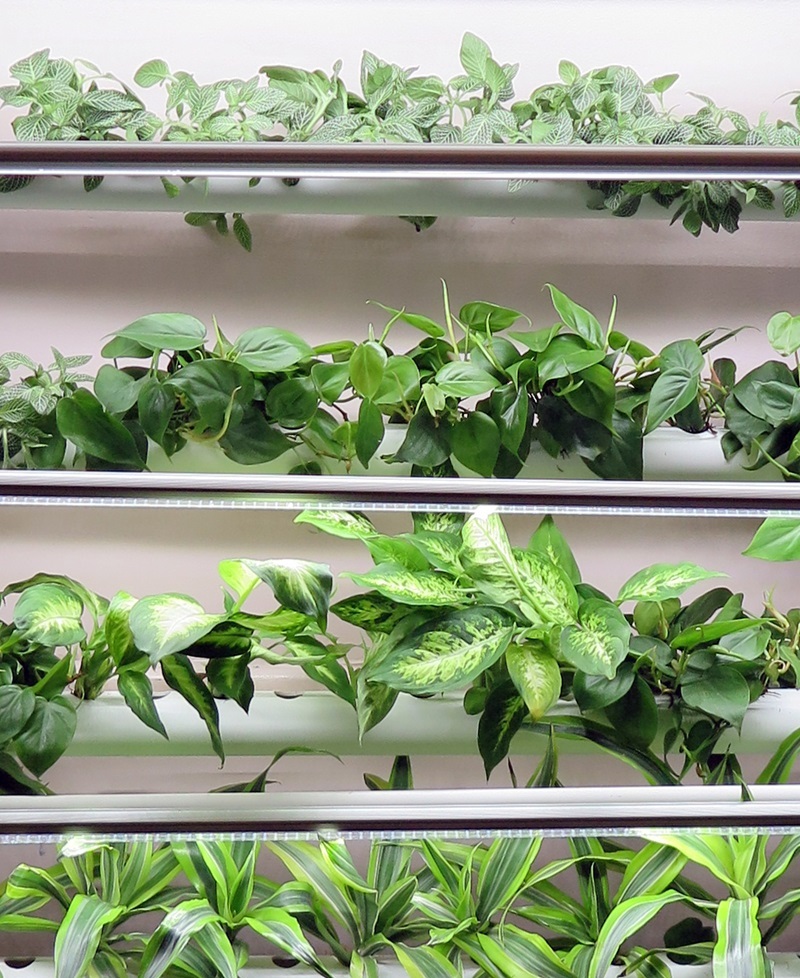Do I Need Grow Lights for my Plants and Which Ones Should I Use?
December 22, 2023
Thinking About Using Grow Lights?
Answers to a Few Basic Grow Light Questions
I get asked about grow lights A LOT.
Problem is, most questions about grow lights required very detailed LONG answers. It's just not a super simple subject. That is why I wrote an entire book on the subject!
But since I'm still getting asked this particular question, I thought I'd summarize some basic thoughts on the topic before you dive deeply into grow lights.
With the resurgence of indoor plant popularity, many plant enthusiasts have discovered their favorite plants may not thrive in their low-light conditions. Or, they want to grow seedlings and edibles indoors, which pretty much always requires grow lighting.
We know from research that keeping indoor plants has many benefits, such as reduced anxiety and stress, improved productivity and focus, and even improved healing. So in terms of wellness, bringing some nature indoors can have a very positive impact on our lives. Beyond the mental benefits, plants bring so much dimension, aesthetically, to our homes and offices. Plants literally bring our indoor spaces to life.
Succulents are a great example of plants that typically need much more light that we typically have to offer them indoors. That's why so many beginners kill succulents from "overwatering". The plants actually need greater light intensity to use the water quickly enough. Otherwise, the root zone simply stays too wet for many succulent and cactus species. However, if you add a grow light, you can significantly improve plant health and vigor.

PC: Leslie F. Halleck
You don't need a green thumb to start gardening indoors with grow lights. You just need a desire to learn and make a few mistakes. Green thumbs are, after all, earned not born! That said, it's beneficial to at least dip your toes into learning a bit more about light science, how plants use lights, and how measuring light indoors can significantly change your understanding of how to use grow lights successfully. Also, indoor environmental conditions are very different from your outdoor environment, so you may experience different challenges with certain plants than you do outdoors.
The best way to be successful with a grow light is to first learn more about the species of plant or crop you are growing. The bottom line is, you aren't going to be able to grow big slicing tomatoes indoors with a small LED grow light. When you acquire a deeper understanding of how tomato plants grow and the amount of light they actually need to thrive, it will completely change your perspective on the type of indoor grow light setup you'll need to achieve those results.
Choosing which LED grow light to use goes back to what you're growing and does your grow light have enough power to emit enough usable light PAR (Photosynthetically Active Radiation) for that plant species or crop. Energy in is energy out and small low-power LEDs won't sustain high-light plants such as citrus or tomatoes. They'll be fine for foliage houseplants or small succulents.
There is a wide range of grow lights to choose from, depending on your plants and goals. If you're growing smaller foliage or blooming houseplants or succulents, then some of the smaller 20-40 Watt full/broad spectrum LEDs will work just fine. Know that dual-multi band LEDs may put off a pink or purple colored light you won't want in your living space. So look for a broad spectrum lamp that emits a "white" colored light. Generally speaking, "cooler" spectrum grow lights (> 5000K) better support vegetative leafy growth. "Warmer" spectrum lights (< 5000K) tend to encourage more flowering. However, most plants will grow just fine under a balanced broad spectrum grow light. HO T5 Fluorescent lamps can still be a good option for these types of plants (just be aware Fluorescents do contain some mercury and LEDs may be a more sustainable choice). If you are jumping to indoor citrus, edible crops, or larger floor houseplants, you'll want to look for more powerful LEDs or even HID (High Intensity Discharge) options.
Yes, there are a lot of cheaply made grow lights on the market these days so I typically recommend buying lamps made in the U.S. I find quality and longevity is better, as well as care of shipping and customer service.
There are no specific types of plants that respond better to grow lights - each species has a requirement for the intensity and duration of light it would normally get from the sun in order to thrive and reproduce. You can, for the most part, replicate these needs using quality grow lights. If you are growing low or very low light foliage plants indoors and you have good natural light from East, West, or Southern exposures then you may not need grow lights for these plants. But if your home is relatively dark, or you want to grow species or edible crops that require more light to thrive, then you may need to at least provide some supplemental light for your plants, or significant lighting for seeds, edibles, and other high-light plants.

